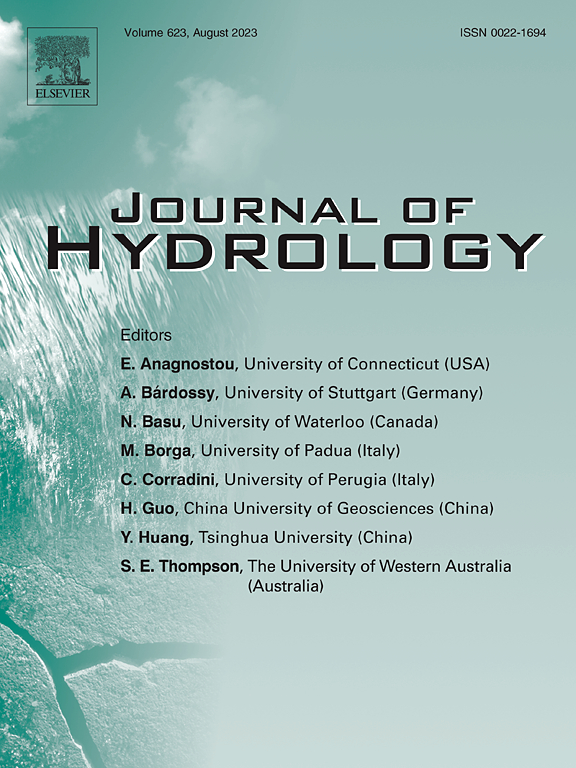Numerical study of impact pressure and force of cascading dam-break floods on the downstream dam
IF 6.3
1区 地球科学
Q1 ENGINEERING, CIVIL
引用次数: 0
Abstract
Cascading dam-break floods are among the most catastrophic natural disasters, causing significant casualties worldwide. Currently, research on cascading dam-break scenarios primarily focuses on the gradual dam-breaching and flood evolution processes. However, the research on the impact of cascading dam-break flood on downstream dam surface is rarely reported. Therefore, this study addresses this gap by establishing a shallow water hydrodynamic model based on the finite volume method. We conduct a numerical investigation into the effects of various parameters, including dam spacing, channel bed slope, initial water depths in upstream, middle and downstream reservoirs, and different cascading dam-break processes (two-stage and three-stage), on the impact on the downstream dam surface. The following conclusion can be drawn: factors such as dam spacing, bed slope and water depth have a significant impact on the impact pressure and force of downstream dam surface. All other conditions remain unchanged, the larger the dam spacing, the higher the peak and average values of downstream impact pressure, and the later the arrival time of dam-break floods on the downstream dam. The greater the bed slope, the higher the impact pressure, and the earlier the arrival time of the dam-break floods. The deeper the upstream or middle water depth, the greater the peak value and occurrence time of the impact pressure. The smaller the downstream water depth, the lower the impact pressure. The impact time of the three-stage dam-break floods is slightly later than that of the two-stage dam-break floods, but its peak and average impact pressure are higher. This study offers valuable scientific guidance and technical support for disaster prevention and mitigation strategies concerning cascading dam-break floods.
级联溃坝洪水对下游坝体冲击压力和冲击力的数值研究
瀑布溃坝洪水是最具灾难性的自然灾害之一,在世界范围内造成重大人员伤亡。目前,对级联溃坝情景的研究主要集中在逐步溃坝和洪水演变过程上。然而,关于级联溃坝洪水对下游坝面影响的研究鲜有报道。因此,本研究通过建立基于有限体积法的浅水水动力模型来弥补这一空白。我们对各种参数的影响进行了数值研究,包括大坝间距、河床坡度、上游、中下游水库的初始水深以及不同的级联溃坝过程(两阶段和三阶段)对下游坝面影响的影响。可以得出以下结论:坝距、河床坡度、水深等因素对下游坝面冲击压力和冲击力有显著影响。在其他条件不变的情况下,坝距越大,下游冲击压力峰值和平均值越高,溃坝洪水到达下游坝体的时间越晚。河床坡度越大,冲击压力越大,溃坝洪水到达时间越早。上游或中部水深越深,冲击压力峰值越大,发生时间越长。下游水深越小,冲击压力越低。三级溃坝洪水的冲击时间略晚于二级溃坝洪水,但其峰值和平均冲击压力均较高。本研究为级联溃坝洪水的防灾减灾策略提供了有价值的科学指导和技术支持。
本文章由计算机程序翻译,如有差异,请以英文原文为准。
求助全文
约1分钟内获得全文
求助全文
来源期刊

Journal of Hydrology
地学-地球科学综合
CiteScore
11.00
自引率
12.50%
发文量
1309
审稿时长
7.5 months
期刊介绍:
The Journal of Hydrology publishes original research papers and comprehensive reviews in all the subfields of the hydrological sciences including water based management and policy issues that impact on economics and society. These comprise, but are not limited to the physical, chemical, biogeochemical, stochastic and systems aspects of surface and groundwater hydrology, hydrometeorology and hydrogeology. Relevant topics incorporating the insights and methodologies of disciplines such as climatology, water resource systems, hydraulics, agrohydrology, geomorphology, soil science, instrumentation and remote sensing, civil and environmental engineering are included. Social science perspectives on hydrological problems such as resource and ecological economics, environmental sociology, psychology and behavioural science, management and policy analysis are also invited. Multi-and interdisciplinary analyses of hydrological problems are within scope. The science published in the Journal of Hydrology is relevant to catchment scales rather than exclusively to a local scale or site.
 求助内容:
求助内容: 应助结果提醒方式:
应助结果提醒方式:


